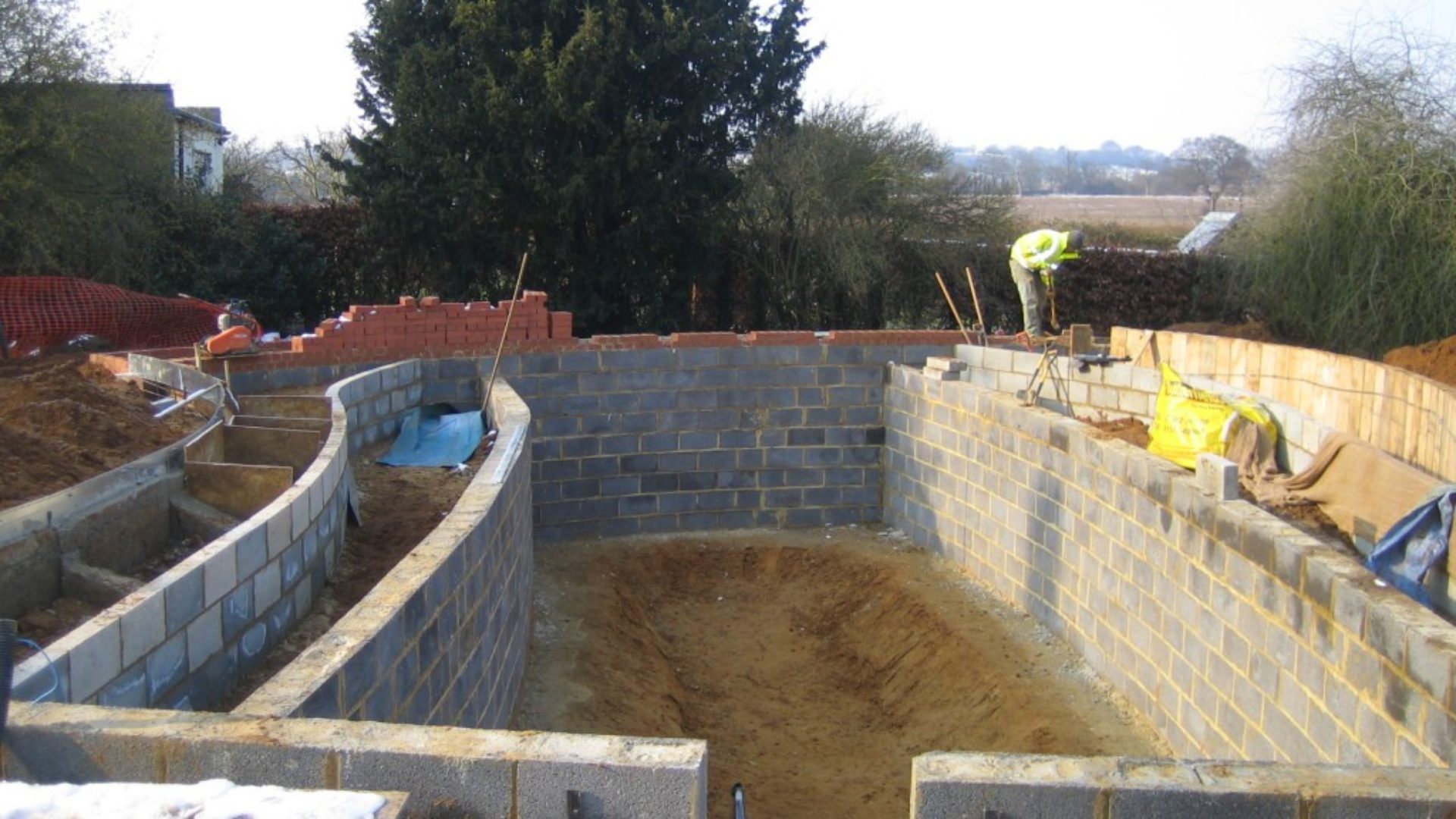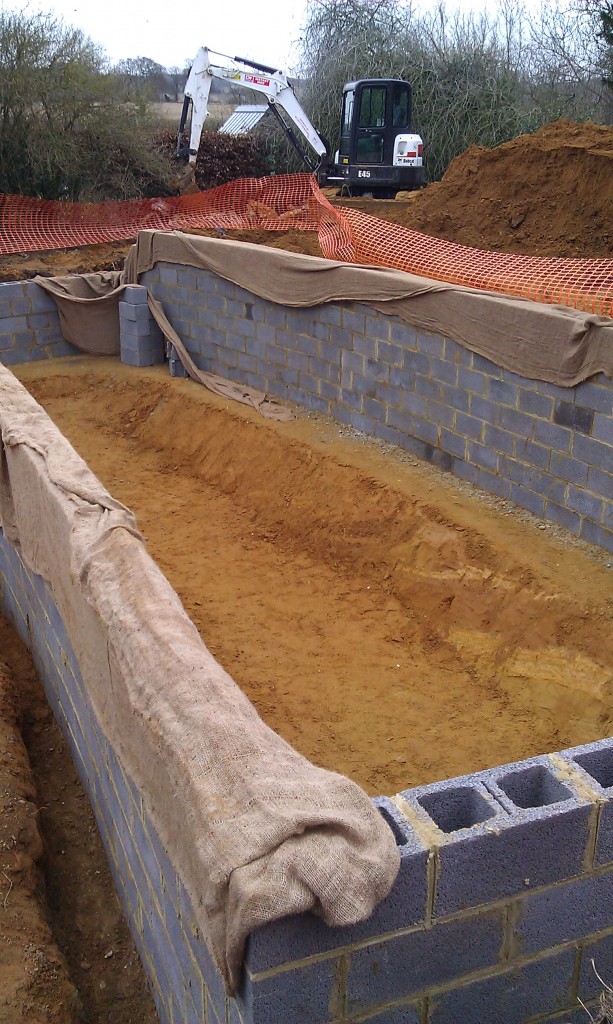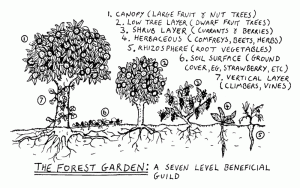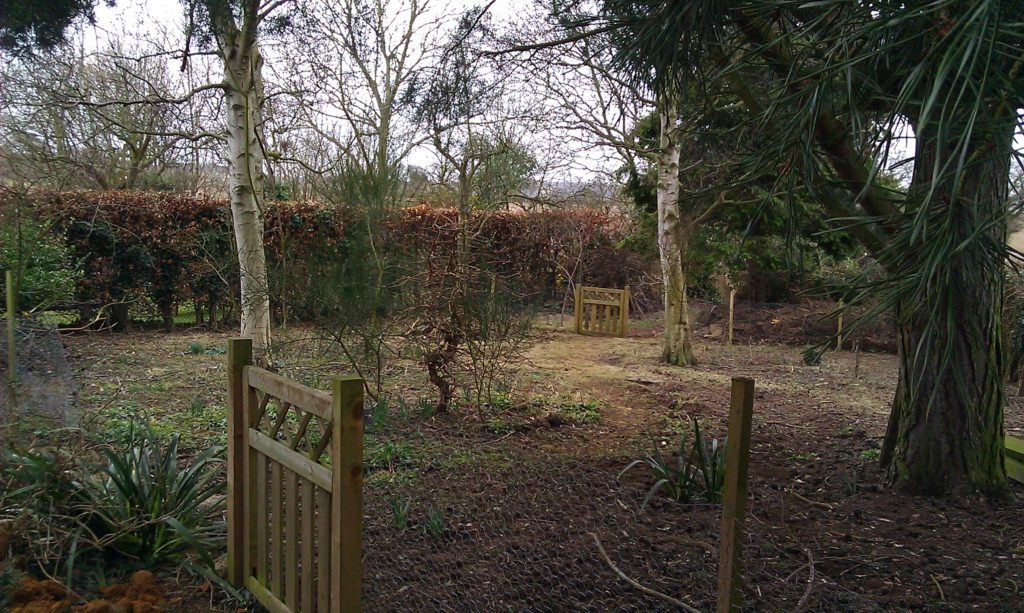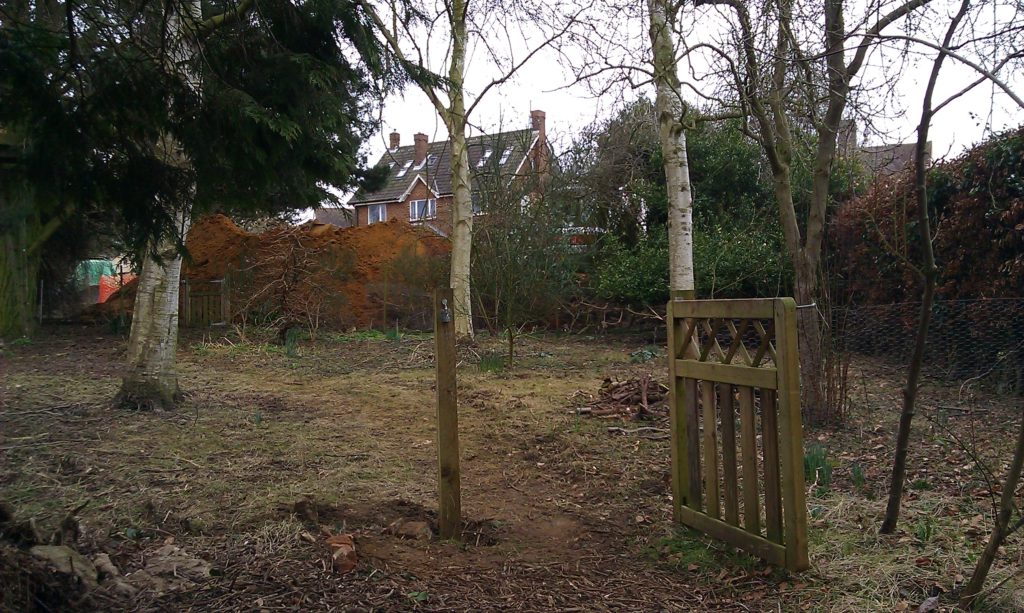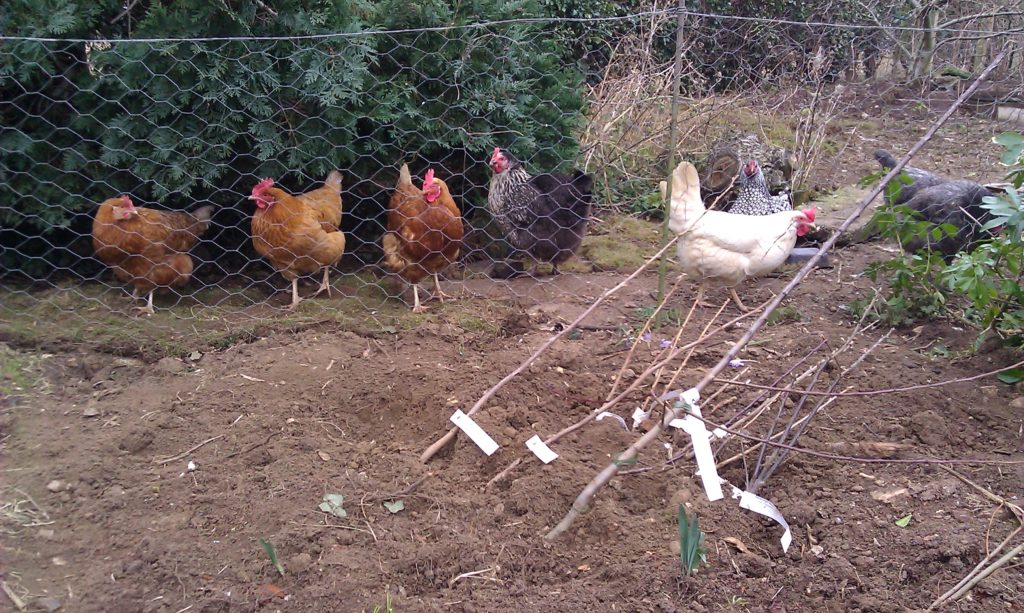Vicky Wyer takes up the story…
Week three of the swimming pond saga and the garden still looks like the outskirts of a Welsh mining town.
The blockwork walls of the deep swim area are almost complete and now stand proud of the surrounding ground – although eventually they’ll be about 300mm below water level. As our garden is on an appreciable slope, we have planned this ‘perching’ of the pool in order to minimise the dig but also to redistribute what was in the hole around the garden.
So where our lawn was sloping it will be flatter, and beyond the pool the ground will need to be terraced to take it back down to existing levels. How this will be achieved when there are spoil mounds on almost every inch of ground remains to be seen…
Plans for our food forest
John has asked me to write a bit about our forest garden plans this week so here goes:
For those unfamiliar with forest gardens they are basically self-regulating, food-producing ecosystems designed to mimic the structure of a woodland edge – optimum light, shelter and layering of groundcover, shrub, understorey and canopy to give abundant production.
This is based on the principle that nature is always pushing towards climax vegetation (woodland in the UK) so why not harness that energy and work with it, adapting nature’s tendencies for our own ends.
How it should work
Briefly in an ideal forest garden all your resource inputs are minimised:
- minimal weeding as planting or mulch covers the ground completely
- minimal watering once established due to the woodland microclimate
- minimal pests and diseases due to the biodiversity
- minimal feeding as the design incorporates sufficient nitrogen fixers to feed the rest via microrrhizal activity. Potassium is added via comfrey mulches, etc
All of which is just as well as between us John and I are pretty rubbish at nurturing our own garden on the whole. Looking after three children, two dogs, a business, a community garden, a neglected house still in need of major renovation, four ducks, eleven chickens, some raised veg beds and a lawn that seems to be the mole-magnet of the county seems to fill most of our time…
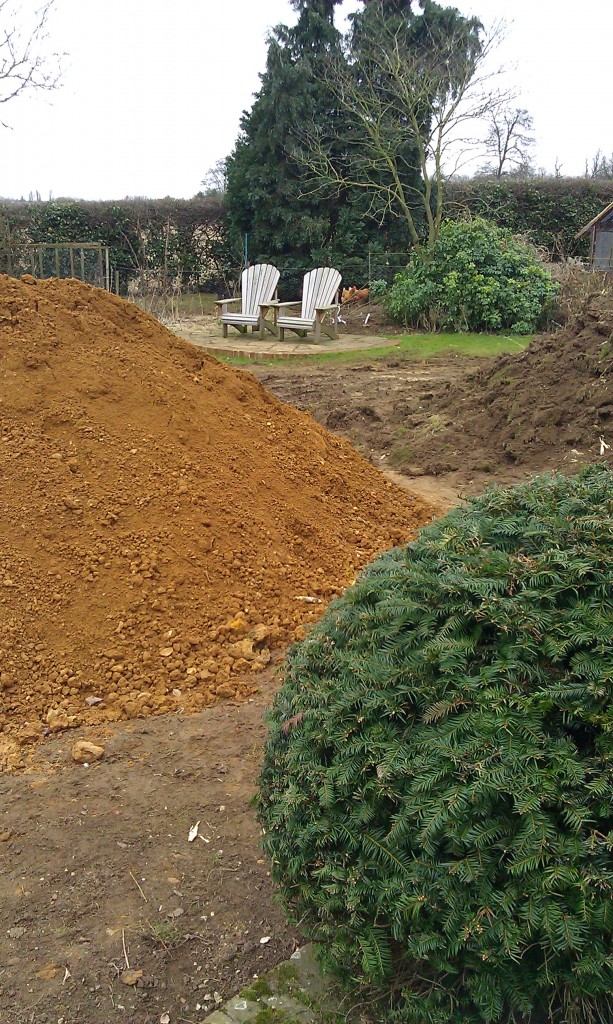
Deckchairs on the Titanic? – where John and I will sit and laugh when this is all over (when we’re done picking all the flippin forest garden fruit)
Factoring in existing ‘challenges’
And as with everything we do at home, our forest garden will be a bit of a compromise: partly since we’re working with a set of existing trees, none of which fix nitrogen, partly because our garden is quite exposed with the sun and wind both coming mainly from the west, and partly because the forest garden is where our chickens roam – good for fertilisation, bad for growing a productive herb layer. Oh and then there’s the rabbits that pop over from the field next door for a little ‘silflay’ every morning…
How it will work – we hope
The idea is to plant some Italian alders along the northerly boundary where they will add shelter and fix nitrogen but not shade the already dappled forest garden too much – luckily the existing trees are birches so there will be some sun getting through. An Autumn Olive (Elaeagnus umbellata) planted for its flavoursome berries next to the southerly hedge, will also fix nitrogen. Altogether this should give us enough nitrogen to satisfy the existing trees and our proposed fruit layers.
As our soil is very sandy and free draining, the terraces we’re planning will help to retain runoff in the forest garden. Along the edges of the terraces we’re going to use the bulky tree waste and hedge trimmings we’ve stockpiled at the bottom of the garden from the removal of numerous unwanted or elderly trees and shrubs. These tree waste bunds will be covered with the turf from the old lawn to create ‘hugel’ beds; the slow break down of the tree waste will release nitrogen over a long period and enhance the soil structure. Rebel farmer Sepp Holzer uses this technique on Austrian mountainsides to great effect.
As well as fruit and nut trees, we’re planning to grow some bamboo near the pond. This will not only act as a much needed shelterbelt but we hope to harvest the shoots for eating.
It’s all happening so fast!
The apricots, almond, hazel, quince, medlar, gage, damson, Mirabelle, plum, blue honeysuckle, cherries, fig and berries-too-numerous-to-mention, have started to arrive from Martin Crawford’s Agroforestry Research Trust in Devon and various other specialist nurseries, and we’ve been busy heeling them in until the areas are ready for planting. And before you ask not all the plants are going in the forest garden – some will go nearer the house and some in the front garden.
And we haven’t even started on the planting plans for the pond itself and its immediate surroundings! Looks like a busy weekend ahead with another round of decisions and compromises…
Recommended reading on Forest Gardening and Permaculture in practice:
Martin Crawford’s Creating a Forest Garden
Sepp Holzer’s Permaculture

